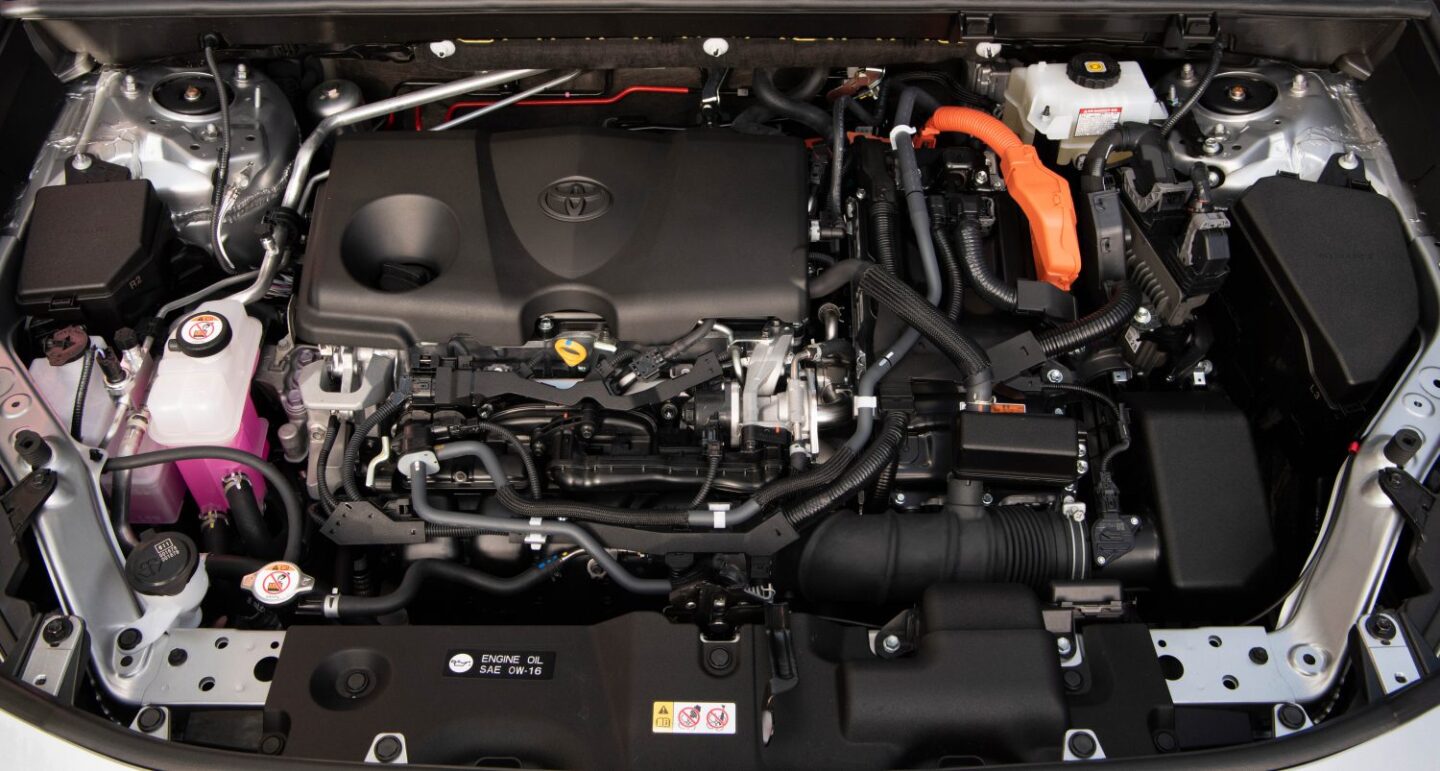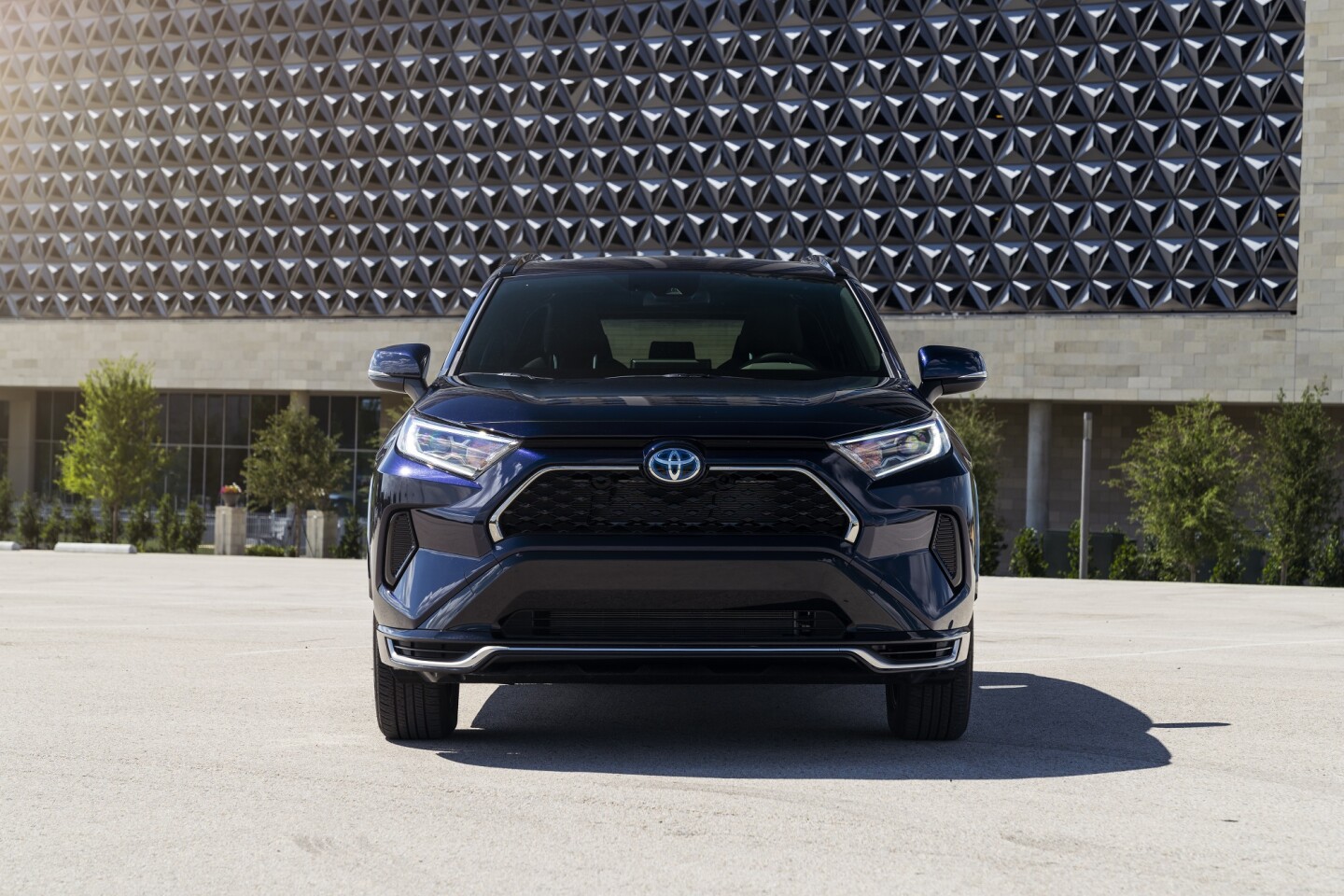Electrified RAV4s, Hybrid vs. Prime
When the current-generation RAV4 crossover was introduced in 2019, Toyota promised both a hybrid and a plug-in hybrid option. We’ve driven both as 2021 model year offerings. Here’s what we learned about Toyota’s electrified RAV4s.
At a Glance
- Starting at US$28,500, the RAV4 Hybrid is only slightly more expensive than the non-hybrid option
- The Hybrid offers five trim level options and is EPA-rated at 38 mpg on the highway
- The plug-in-hybrid Prime offers 42 miles of electric-only range
- The Prime is much more expensive and has only two trim levels
The Toyota RAV4 Hybrid was introduced in the previous generation of the crossover and carried over into the current generation without too many changes. The hybrid technology just made sense. With it, Toyota introduced what has become the architecture upon which most of its all-wheel drive offerings with a hybrid option are built. Toyota didn’t invent the idea of foregoing physical connections for the rear axle in a front-driven architecture converted to AWD, but the company has taken it to mass production.

Toyota
The RAV4 Hybrid’s AWD system works, quite simply, by putting an electric motor on the rear axle and connecting it electronically to the motors and transmission up front. The rear axle is thus driven purely by the motor there, without a physical driveshaft connecting the drivetrain up front. This saves weight, costs, and engineering hassle as well as energy losses. It’s compact, relatively easy to add, and much smarter. And in the RAV4 Hybrid, we’ve noted in the past, it works really well.
Specifically, the 2021 Toyota RAV4 Hybrid runs an Atkinson-cycle 2.5-liter four-cylinder engine mated with two electric motors and a continuously variable transmission (CVT), which form the basis of what Toyota calls its Hybrid Synergy Drive (HSD). These twin motors act as a generator during regenerative braking, a starter motor, propulsion in all-electric driving, and as a boost to the axle during hybrid operations. A third motor rests on the rear axle to add all-wheel drive. Total output is 219 horsepower (163 kW) in all.
Because the RAV4 Hybrid has been around a little while and has a clear audience of buyers, Toyota offers it in five trim levels, starting at US$28,500 before delivery. That’s not much of a jump from the equivalent gasoline-only model at $26,050. The 2021 RAV4 Hybrid is EPA-rated at 38 mpg on the highway. Comparatively, the standard gasoline RAV4 without all-wheel drive is rated at 35 mpg highway. Adding AWD to that gasoline-only version drops MPG to about 32. That’s a big jump for not much money.
As with all RAV4 models, the RAV4 Hybrid has a roomy interior, lots of cargo space, good passenger and driver comfort, and drives well on the road. It drives better than the gasoline-only model, we think, thanks to better vehicle balance and earlier torque curves. The 2021 Toyota RAV4 Hybrid is, by all accounts, a well-executed small crossover.

Toyota
The 2021 Toyota RAV4 Prime model takes the Hybrid and goes a step further, adding a plug and a lot more EV-only range. Where the RAV4 Hybrid has about two miles of EV range in all, on the best of days, the RAV4 Prime has about 42 miles (67.6 km). This comes thanks to larger motors and a much larger battery pack.
The Prime has the same basic hybrid setup as does the RAV4 Hybrid, in that motors are running both the front and rear axles. The greatest difference is in the size of those motors and the size of the battery pack (18.1 kWh in the Prime). These combine for 302 horsepower (225 kW) of total output in all-wheel drive, 82 hp more than the Hybrid.
The Prime feels quicker than its counterparts in the RAV4 lineup and is certainly more technologically-advanced in its appeal. It does suffer in terms of drive quality though … and price point. If you can buy one at manufacturer’s suggested retail (most dealers are currently marking them up), it’ll start at $38,100 before delivery. But for that, you’re getting an MPG-equivalent rating of 94 combined from the EPA. That’s impressive.
And the RAV4 Prime has all of the roominess, cargo space, and general appeal of the other RAV4 models, even if it’s not as engaging to drive.
Both electrified Toyota RAV4 models have Toyota’s full suite of advanced safety systems, including crash mitigation and the like. Both have Android Auto and Apple CarPlay included with their (otherwise outdated) infotainment systems. And both are good looking crossovers.
Although the Prime is currently the only non-premium plug-in hybrid in the segment, we would still recommend shopping it against the other hybrid offerings on the market as they do offer better ride quality, long-term drive comfort, and perhaps more appeal. On the other hand, 42 miles of estimated range (ours varied according to weather and idle times) covers most daily needs, as long as you can get easy access to a plug.
Product Pages: 2021 Toyota RAV4 Hybrid, 2021 Toyota RAV4 Prime








